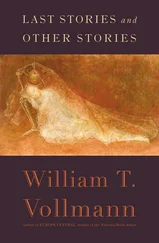Other poems in that famous collection are less understated. One poet informs us: “When I visited the abyss of Tamashima, I happened to meet some girls fishing. Their flowery faces and radiant forms were beyond compare. Their eye-brows were like tender willow leaves and their cheeks were like peach flowers.” “On the Death of an Uneme from Tsu, Kibi Province” goes so far as to describe a girl’s “soft white arm”; and the most concrete encomium of all, “Of the Maiden Tamana at Suee of Province of Kazusa,” lets it be known that its heroine was “broad of breast,” wasp-waisted and radiant-faced — an irresistible combination, apparently, for “charmed were all men.” Lady Otomo of Sakanoe praises her absent daughter’s “lovely eyebrows / Curving like the far-off waves,” and “the young moon afar” reminds another poet of “the painted eyebrows / Of her whom only once I saw.”
But I repeat: The jeweled hairpin is not merely metonymic for the woman; by the preference of the time, it hides her. Beauty wants to mask itself. And while Murasaki takes occasional note of the personal charms of her intimates — the delicate shape of Lady Saisho’s forehead and the loveliness of her blush, the “translucent delicacy” of Her Majesty’s complexion shortly after giving birth — the picture a reader obtains is never by my standards complete. “The shapes and faces” of court ladies “reflecting the moonlight in the garden with its white sand were most intriguing.” This aesthetic feels not overdistant from the aphorism in Zeami’s treatise Sando : “As long as the character is mysteriously beautiful, whatever is done should be interesting.” Sometimes Murasaki’s companions flirt a trifle with the men, or even make love with them, but they prefer to do so when they think they will not be recognized later. Call it understatement; call it discretion. A man taps on the door with a single finger, and the woman recognizes him; whether or not she lets him enter, she replies with a faint swish of her fan. As for her sisters, lurking gorgeously behind screens and fans, they are mysterious not only thanks to their various veils, but also on account of their close resemblance to each other. I call to mind the women depicted in the Tokugawa Museum’s Genji Picture-Scroll, snow-faced against gold, beige, lavender and turquoise: One peeps out of the gap she has made in a sliding door, her white hand still on its edge so that she can close it upon anyone’s approach; another half-hides her chin in the flow of her kimono; a third gazes downward. Their oval, high-eyebrowed faces have been understated into near sameness. 3And indeed, one passage of Murasaki’s diary describes a formal function in the following approving terms: “Just as in a beautiful example of a Japanese scroll, you could hardly tell them apart. The only difference you could detect was between the older women and the younger ones,” and that once again on account of the hair.
If we could have glimpsed Murasaki in her formal beauty, we would have seen someone with depilated eyebrows replaced by painted ones higher up, someone with black hair, black teeth and a white-powdered face. But she would not have been happy if we had glimpsed her, let alone seen her. In her Tale of Genji , the Shining Prince has relations with many a woman whom he cannot see. Invisibility becomes still more pronounced for The Taiheiki ’s fourteenth-century heroines, and we saw it associated with Tanizaki’s mother’s epoch. Needless to say, the Japanese minted a term for this: miekakure , the tantalizing glimpse.
In this context, let us now revisit another term. Defining “the basic form of yugen ” in his manuscript Nikyoku santai ningyozu , on a sheet alongside a drawing of a longhaired naked woman with her face bowed and her hand between her thighs, Zeami writes: “Make your sensibility the basis of your acting and reject any show of strength.” Here is the mystery of the beautiful mask: It expresses itself without showing itself. It is the hairpin, not the face; the face, not the body; the voice behind the screen; the carved block of cypress-wood. Who was Lady Murasaki? I am acquainted with her a little; I’ve experienced her yugen , because I have read and loved The Tale of Genji . But if I try to imagine her, I see her only as she would have wanted me to: a calligraphic ink drawing.
Such is certainly not the case for the beautiful woman with the man inside her, dancing for all of us on the Noh stage. Once upon a time, perhaps, there was a girl after whose face a specific ko-omote had been modeled. — Why not suppose so? It is rumored that the sixteenth-century priest Himi Munetada carved a certain ryo-no-onna after the sunken face of a woman who had perished of cold and hunger.) Surely both of these ladies would have been ashamed to let us stare at likenesses of their naked faces. And yet we do, and those faces appear to live. Still they retain their secrecy — because they are masks.
The following seventeenth-century description exposes the perfect face in greater specificity: “A courtesan shaves her eyebrows, paints heavily above her forehead and eyes without an ink stick, wears her hair in a great Shimada without inserting any wooden support,” and shows the nape of her neck in its perfect nudity. (By the way, her buttocks, unlike a Brazilian beauty’s, should be “flat as an opened fan.”) All the same, each detail of the face is an imposition of a uniform style, the face thus overlaid with indications of its status and availability. Is this anything but another mask? Whenever I see a long line of Nakamura Mitsue’s woman-masks, all seeming to half-smile if viewed at the same angle, always presenting the white parting of the black hair, I feel that I have met many sisters, whose black teeth (less age-glossed than those of Mr. Umewaka’s much used masks) and protruding under-lips all allure me into reveries of kissing. But their nudity, delicious as it is, lacks most the power of their embodiment upon the stage, when they will tilt in strange half-smiles, gazing through me from far away. As a certain lover used to whisper into my mouth: “What are you doing to me? Oh, what are you doing…?” And then she would close her eyes. I always wondered why she asked that, why she darkened her gaze. Now I think I know.
The poet Kamo no Chomei, who died in 1216, used the following example in explicating “the style of mystery and depth”: “A beautiful woman, although she has cause for resentment, does not give vent to her feelings in words, but is only faintly discerned — at night, perhaps — to be in a profoundly distressed condition. The effect… is more painful and pathetic than if she had… made a point of wringing out her tear-drenched sleeves to one’s face…” To me this statement recalls the quietly disturbing beauty of a deigan mask.
And not quite eight centuries later, on the morning after seeing one of his Takigi-Noh performances, I had the opportunity of interviewing Mr. Kanze in the lobby of his hotel in Kyoto; and asked him to elaborate on this very question:
“In the great novel Dr. Zhivago a character states: It’s a good thing when a man is different from your image of him. It shows he isn’t a type. If he were, it would be the end of him as a man . What is your reaction to this from the standpoint of Noh? Is your goal as an actor to express a specific humanity or personality in a role, or to express a type? If you play Yuya, for instance, do you seek to bring to life a specific woman, or a general type of feminine beauty, or something different still?”
“In a role, you have to discover something every time,” Mr. Kanze replied. “If you are regarded as a stereotype, even before you perform they will know, so that is meaningless. Everything will fail unless the performer has a new discovery every time.”
Читать дальше












